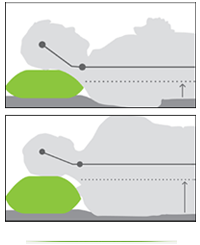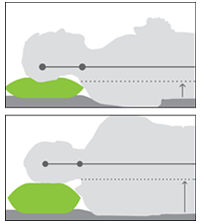You need the proper Sleep Equipment.
Your pillow is second only to your
mattress in helping you achieve better sleep. The pillow used with your old mattress will likely be too thin or too thick when used with your new Sleep to Live sleep system. The Sleep to Live diagnostic process measures your body for both the right sleep surface and the right pillow, which work together to keep your spine aligned while you sleep.
Most people are more concerned with pillow aesthetics rather than a pillow that is the appropriate fit for their body. Sleeping with a pillow that is overstuffed or too thin can negatively impact your sleep quality and how you feel in the morning.
Ideally, your pillow should keep your head neutrally aligned without bending back too far, reaching too far forward or too far to one side. Only the Sleep to Live diagnostic process can determine the pillow height that will provide the best support and keep your spine aligned on your new Sleep to Live sleep system.
How Is My Pillow Height Calculated?
Your pillow recommendation is based on a calculation of the distance between your head and shoulder, your preferred sleeping position, and your recommended Sleep to Live mattress.
Sleep to Live technology analyzes your body�s weight distribution in your preferred sleeping position, and determines how deep into the mattress your body will rest at the shoulders level.
Because Sleep to Live pillow recommendations are calculated with algorithms assigned to the profiled Sleep to Live mattress surface, it is impossible to make a pillow recommendation for any other bed with this technology.










